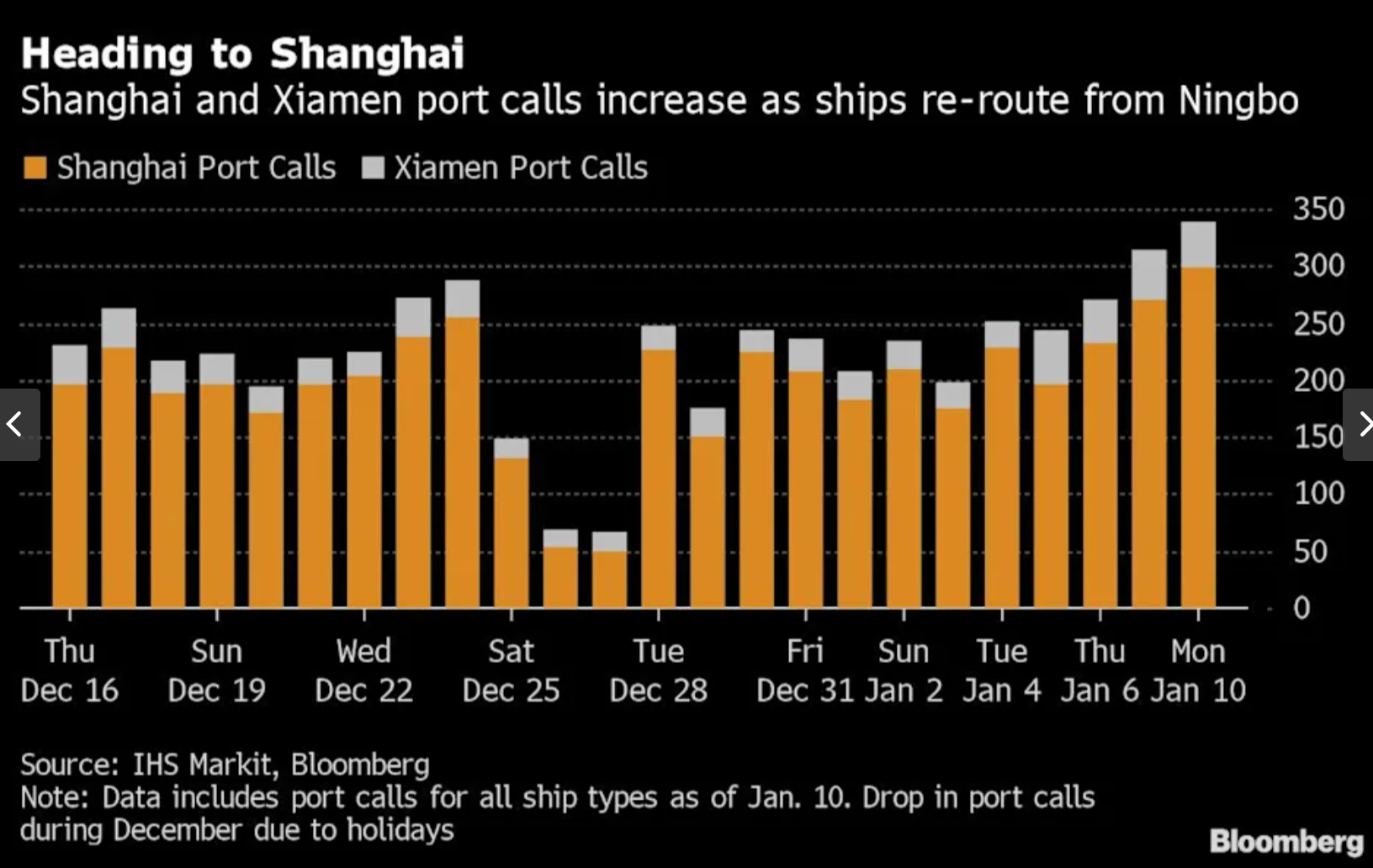
14 Jan New year brings new all-time high for shipping’s epic traffic jam
America made it through Christmas without too many bare shelves, despite historic port congestion. Goods were brought in early and shoppers shopped early. Holiday sales were up 11% from 2019, pre-COVID.
Consumer fears of a holiday shortage appear to have spiked in October, then pulled back as concerns lessened.
Google searches for the term “port congestion” were up 376% from the beginning of 2021 in the second week of October. Searches for the term “supply chain” peaked in the third week of October, up 194% from the beginning of last year. Searches for both terms then faded back to normal in November.

Supply chain pressures are trending in the opposite direction of Google searches. The holiday rush may be over, but the offshore traffic jam of container ships is still getting worse, and the volume of inventory on the water (thus unavailable for sale) is still increasing.
As 2022 begins, import volumes remain very strong ahead of China’s Lunar New Year holiday, concerns are mounting about omicron-induced dockworker shortages at U.S. terminals, and the number of container ships waiting for berths in Southern California has — yet again — hit a new high.
Ships waiting off SoCal triple
A record 105 container ships were waiting for berths in Los Angeles and Long Beach on Thursday, according to data from the Marine Exchange of Southern California.
Of those, only 16 were in port waters (within 40 miles of Los Angeles and Long Beach) and 89 were loitering or slow steaming outside the newly designated Safety and Air Quality Zone, which extends 150 miles to the west of the ports and 50 miles to the north and south. Ship-positioning data from MarineTraffic confirms that most of these vessels are off the Baja peninsula.

There are now more than three times as many container ships waiting for LA/LB berths as there were at this time last year, 11.6 times more than on June 24 (the low point for last year), and 31% more than on Oct. 24, when online searches for the term “supply chain” peaked and the ports of Los Angeles and Long Beach announced a new Biden administration-backed congestion fee plan.
Because ships vary widely in size, a more telling indicator than the number of ships is total capacity of vessels in the queue. The vessels waiting for LA/LB berths on Thursday (including container ships and general cargo ships with containers aboard) had an aggregate capacity of 815,958 twenty-foot equivalent units, according to Marine Exchange data.
To put that in perspective, that is 6% higher than the combined imports of Los Angeles and Long Beach in the entire month of November. It is 9% higher that the capacity of ships waiting offshore at the end of November (745,305 TEUs) and 28% higher than capacity off LA/LB at the beginning of November (637,329 TEUs).
Ships waiting off other ports
It’s not just about LA/LB.
In Northern California, the port of Oakland experienced heavy congestion in Q2 2021, after which queues disappeared when carriers slashed services. But services are being added back and anchorages are refilling. As of midday Friday, MarineTraffic data showed eight container ships anchored in San Francisco Bay and one more loitering in the Pacific.
An additional four container ships were waiting for berths in Seattle/Tacoma in the Pacific Northwest. And over on the Gulf Coast, five container ships were anchored or loitering off the shores of Houston.

On the East Coast, the queue off Savannah, Georgia — which at one point last year reached 30 ships, second only to LA/LB’s — was down to just two container vessels. However, queues have grown to the north. There were six ships waiting off Charleston, South Carolina, and an additional four waiting off Virginia.
The ports of New York and New Jersey are now home to the largest queue on the East Coast. As of Friday, MarineTraffic data showed 11 container ships offshore, bringing the grand total waiting for berths along all three U.S. coastlines to 146.


